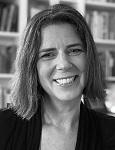The story of a farm—or a restored prairie for that matter—is told by 1000 voices. When I offered to conduct an oral history project on the Friends of the Field Station of UW–Milwaukee at Waukesha, I had no idea the project would be such an instructive delight in how to belong to the land as a community of practice.
Within days of the prescribed burn in April, the forbs and grasses of the Marlin Johnson Prairie emerged and began hardening, greening. Many weeks later this southeastern Wisconsin prairie on the 98-acre UW–Milwaukee at Waukesha Field Station in unincorporated Waterville actively prepared for another stage of life, absorbing nutrients. But now their leaves and stems are browning and withering with the colder and shorter days. All but a few species have let go of their seeds and the persistent enterprise of growth.
Among the bent stems of their soil-fellows, the goldenrods have entered their final act. Like method actors, they embody a different character at every stage of their lives. First they grow tall and gangly, slouching until in June their winking green eyes unfurl. Then they become self-possessed as the jocund sparklers of their inflorescences ignite in August. By October their leaves and stems have faded to yellow-grey, and the bearded floss that carries their seeds has turned from gold to white. They hang like hoarfrost throughout the rolling fields, in anticipation of winter.
On the day for goldenrod seed collection, the Friends of the Field Station have come, and I am among them, learning how to gather and store the treasured seed for next year’s planting. I am equally hopeful of gathering the Friends’ trust and their stories. By early afternoon the western section of the prairie is occupied by Friends, each wearing a harness with a cut-away milk jug tied with twine. Like milkweed seeds lofting on the air, we drift together and apart in a loose, comfortable congress. A toddler meanders curiously toward a college student who came out to satisfy an assignment in one of his biology classes at UW–Waukesha. The young man squats to help him gather a tiny fistful of seeds. The boy’s father, with an infant strapped to his chest in a baby carrier, waves to the young man in appreciation. All around them, everywhere, long-standing friends of the Field Station are gathering and gossiping. It has been two years since they have been able to do this work together. Births, weddings, graduations, retirements, moves, deaths—there is much to catch up on.
Farther down the field, biologist Marlin Johnson is collecting seed, greeting former students and old friends. The first director of the Field Station and its grand architect, he continues pinching the goldenrod seed off the spent blooms and placing them in the milk-jugs as he answers questions and directs volunteers who need assignments. Plant to jug, plant to jug, his hands never rest. Fifty-two years after drafting the master plan for this Waukesha County arboretum, he is still ceaselessly working to bring it to fruition as a community of practice.
The land remembers, as Ben Logan reminds us in his memoir of growing up on his family farm in southwestern Wisconsin. But what is the power of the land’s memory if there is no one who witnesses it? And as important a question, what is the power of the land’s memory when there are people who do?
These questions guide the Field Station’s work these days, for organizations are like prairies. Each succession of their life cycle possesses its own color and intensity, its own unique labors. In the years since Marlin Johnson retired as Field Station Director and UW–Waukesha became a college administered by UW–Milwaukee, the Field Station has entered a new stage of succession—one perceived as mature, stable, past the need for restoration, but still requiring maintenance.
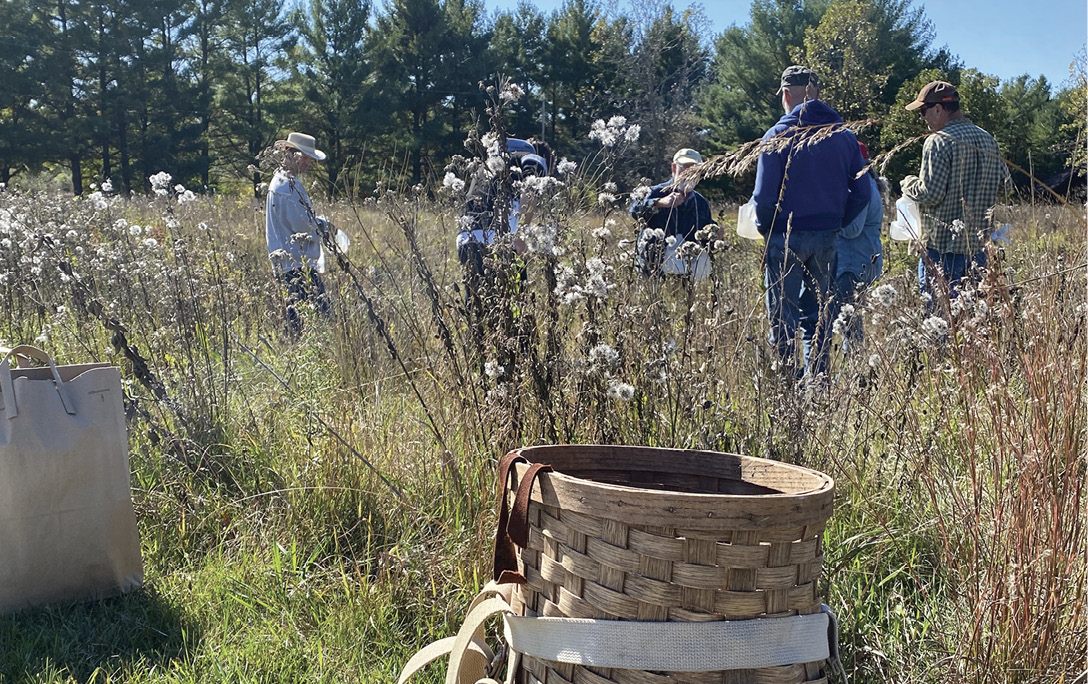
Within this period of its succession, stories will be its most critical tools. This past year Marlin has worked with Field Station Committee Member and UW–Waukesha biologist Suzanne Joneson to curate a digital archive of photographs that capture 55 years of the Field Station’s history. The archive is housed in the UWM Library’s Digital Collections and accessible on their website. In conjunction with their efforts, I have been collecting oral histories and photographs of the Friends of the UW–Waukesha Field Station. The stories, footage, and images I collect will help keep the public memory of this land trust alive, to serve as a resource for those committed to earth-centered learning, and those who are entrusted with the Field Station’s future.
Like all subjects whose memories are deep, sonorous, and under-documented, the land must be invited to reveal its past, ideally by a skilled historian with a biologist’s tendencies. Marlin Johnson is such a specialist. He took up residence in the Field Station’s 100-year-old farmhouse in 1970 and began his life’s work at UW–Waukesha. He immediately turned to the soil, the flora, the fauna, and began asking them to divulge their stories.
The oaks, it seems, were the first to speak to him. “We have six very large trees here,” Marlin explained during our first interview. “[They are] probably 200 years old, so they were here at the time that the pioneers came. […] That was a clue to me, to say that ‘hey, there was an oak opening here at one time.’”
Oak openings were a common form of natural plant community in central and southern Wisconsin for thousands of years, but today few of them exist. They were characterized by stands of open-grown oaks, their thick limbs extending in all directions like spinning Sufi. Bracing the ample space between their arms, the oaks towered above an open understory of prairie or woodland species.
Notably, oak openings had another characteristic feature: they were a sort of exclusive country club for bur and white oaks. Other than in seedling form, no other tree species were found within these ecological systems, which led them to resemble the curated parks found on English estates. How was that possible? 18th- and 19th-century travelers pondered. Who has done this? Where did they come from, and where are they now?
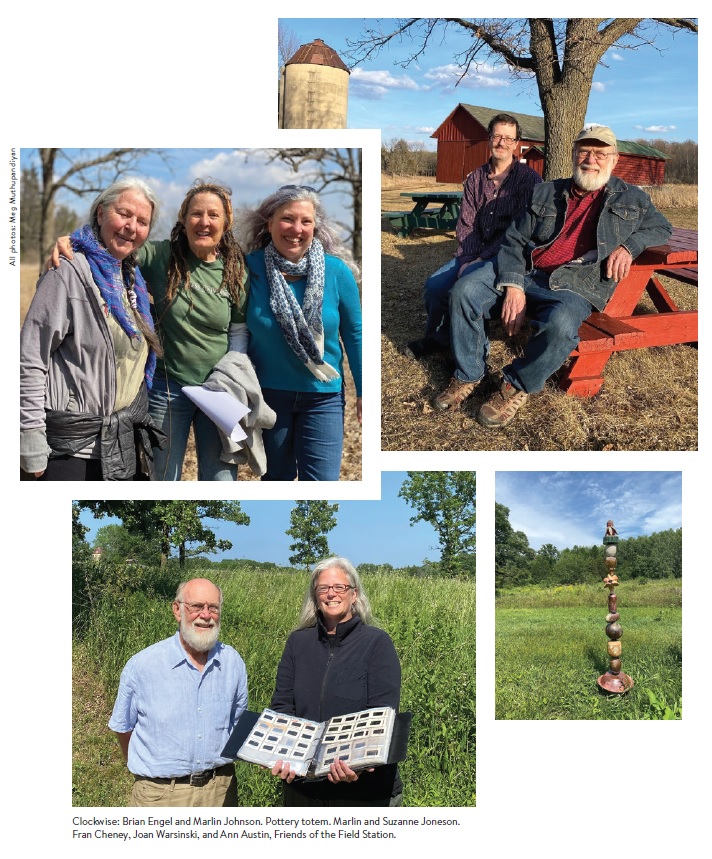
For centuries before the settlers came, fire had been a mainstay of the land’s existence. Often ignited by lightning or by accident, fires were also set by indigenous Americans, who used controlled fire as a tool for hunting, land management, and propagation. While fire ravaged the understory, carbonizing forbs, grasses, and weaker tree species, the oaks grew stronger. Their bark was resilient.
In all histories there is a peripetia—a turning point that marks irrevocable change. For Wisconsin’s oak openings the peripetia happened in 1837. The year before, the federal government had parceled up the state’s land communities into acreage. As the land was bought, it was converted for agricultural or domestic use. Although many of the largest oaks would remain, the native plants that composed the understory would be all but irradicated with the introduction of corn, wheat, and other crops. As importantly, as fires were suppressed, other tree species and woody plants began to crowd out the oaks that remained. Those that found new fast-growing neighbors shouldering up next to them began losing their sunlight, causing their lower limbs to die and fall off. The oaks’ majestic reign over the southcentral Wisconsin landscape was over.
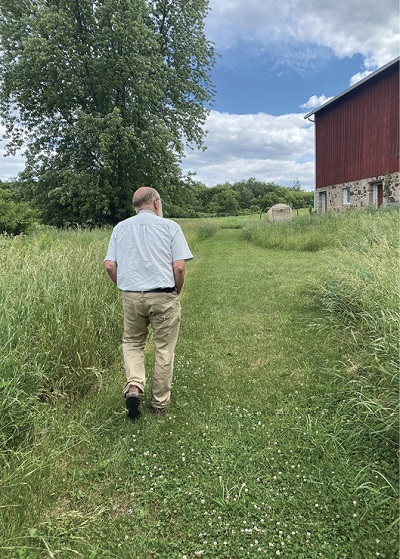 But the land surveyors unwittingly helped the oak openings record their history so that it could be heard and shared. After having seen six bur oaks dotting the abandoned farm-field while he first walked it in 1970, Marlin sought the original land surveyor’s records and found the oaks staking their claim in history. Through the process of creating the maps, the 19th century surveyors “recorded what they called witness trees at every half mile,” Marlin explains. “…they recorded the distance to the tree, the size of the tree, and the name of the tree.” These details for Marlin were the key to understanding what the trees were trying to tell him about this native ecological community. “It turns out that this field station was actually in an oak opening that the surveyors saw,” he explained.
But the land surveyors unwittingly helped the oak openings record their history so that it could be heard and shared. After having seen six bur oaks dotting the abandoned farm-field while he first walked it in 1970, Marlin sought the original land surveyor’s records and found the oaks staking their claim in history. Through the process of creating the maps, the 19th century surveyors “recorded what they called witness trees at every half mile,” Marlin explains. “…they recorded the distance to the tree, the size of the tree, and the name of the tree.” These details for Marlin were the key to understanding what the trees were trying to tell him about this native ecological community. “It turns out that this field station was actually in an oak opening that the surveyors saw,” he explained.
As he pursued an understanding of the land’s history during the early days of his land restoration process, Marlin walked miles of the rail line that bisected the southern end of the property. In the spirit of naturalists like Aldo Leopold and May Theilgaard Watts, he sought native species in un-landscaped places—between fence posts, in abandoned cemeteries, and along railroad rights of way. He classified the natives, documented emergent species, and, after seeking permission from the railroad, harvested the prairie plant seeds to bring home to the Station.
A naturalist would have prepared and labeled the seed for winter storage, then brought it out to be broadcast in the spring. An environmental historian would have documented and shared what the land revealed about its ancestral origins, then broadcast it in academic and scholarly publications as soon as possible. A teacher would ignite a flame in others to share in the work. Marlin did all of these. He collected photographs, he engaged in phenology, he spent hours at Waukesha’s Historical Society pouring over historical accounts of the first travelers to pass through these lands. He catalogued and archived, plotted and planned. And then he set to sharing what he had discovered about the land and its native inhabitants. He wrote articles and essays and drafted maps about the pre-settlement vegetation in Waukesha County. He cultivated relationships with students and neighbors, colleagues and strangers, and taught them to read the land’s history—to take in what it continues to say. As he summarized toward the end of our first conversation, “It’s a long history, and we’re kind of restoring what it was.”
In preserving the land’s history, Marlin Johnson did not work alone. The Friends of the Field Station have been “in the mud of it” for the last half century, in his words. The Friends, currently a group of 35 households, are UW–Waukesha educators and students, public artists and local citizens, each one or two degrees removed from Marlin. “This prairie was restored through their efforts,” he explains, surveying the rolling hills beyond where we sit on a hot July afternoon.
The prairie is in full bloom now; twelve spotted skimmers shimmer like floss while they do their dragonfly hover, foraging above this midwestern “sea.” That first April of the restoration process, and for many Aprils to come, the prairie looked nothing like this, Marlin tells me. It had been fallow for many years, chock-full of the non-native smooth brome and thistle that had overtaken the abandoned farm fields. That spring the first Friends lay black plastic in 50' x 50' or 100' x 100' plots, and then let the arid dark heat go to work on the non-native invasives, killing all but their seeds.
For ten months, the brome and thistle were left to bake, break down, and return to the soil. Marlin grew seedlings in the Field Station greenhouse—lupine and compass plant, leadplant, wild quinine, and white wild indigo. The following May, the Friends returned to lift the plastic, rake the earth, broadcast seeds, and rake them lightly into the black earth. Then they planted the 600 seedlings Marlin had nurtured. A couple of months later, they began cutting and pulling newly sprouted, non-native weeds so they couldn’t go to seed and regain footing. A restored prairie was born, and its stewardship had begun.
By October their leaves and stems have faded to yellow-grey, and the bearded floss that carries their seeds has turned from gold to white. They hang like hoarfrost throughout the rolling fields, in anticipation of winter.
For over fifty years, this community has gathered to accompany the prairie over the threshold of every season. Until several years ago, they managed the prairie burn that takes place each April. However, the task was taken over by the Prairie Enthusiasts when the Field Station Committee, reorganized after Marlin’s retirement, decided there was too much liability involved in letting the Friends manage it. But they still come to sow seeds in May, weed and pull garlic mustard in June, gather seeds in mid-September and mid-October. After each long working day they celebrate with a potluck around a campfire or in the greenhouse, as the weather dictates. In their stewardship of this prairie, its members have found a ritual that binds them to the land, and to one another.
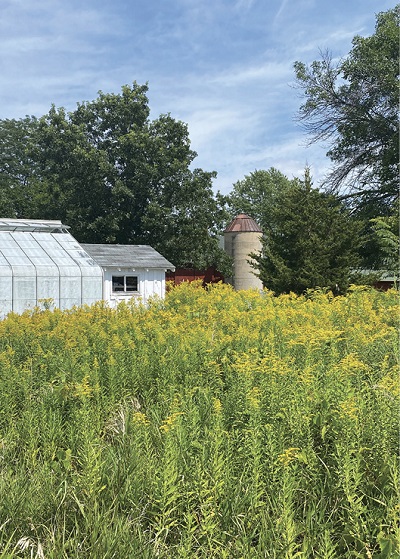
As the land community has been restored, the Field Station has also become a community of practice. A multi-generational group of people with different motivations, levels of formal knowledge, and backgrounds, the Friends nurture one another’s passion for living and learning from the land. It’s a group that takes care to deepen its shared knowledge and to celebrate and lean on each member’s increasing expertise. They have adopted a peer-to-peer model of learning used by Marlin from the start of the restoration process.
Fran Cheney, along with her husband, UW–Waukesha professor of philosophy Jim Cheney, was one of the earliest and most active of the Friends. In a March 2022 interview, Fran described the culture of knowledge-sharing that has been fostered through the seasons and years of restoration:
…Marlin’s way of sharing. It’s not in your face. When we gather, he’ll say “today we’re going to pick seeds from compass plant, big bluestem, little bluestem, lead plant.” He’ll name what we’re going to do, and he’ll show us because there will be some new people. It might be five of us, but ordinarily it’s twenty of us gathered together. And we all have our equipment to gather the seeds, sacks and pencils to write on the paper sacks. But Marlin, really, he’s just got this generous spirit, so when he’s showing new people ‘this is big bluestem’ there’s a kind of generous openness. He takes the time. So it has very much to do with Marlin starting this. When we were out on the field gathering, and maybe new at this…we began to teach each other.
Other Friends also noted how Marlin’s generous spirit guides their work. Brian Engel related how Marlin continues to be a dear friend, three decades after he met him as a college student. “I took all of his classes—every spring break trip to the Smokies or Ozarks. He wouldn’t let me know he was grading my papers as I drove,” he said with a chuckle. “We still go out at least once a month,” he says.
And that spirit is perhaps most profound when exhibited toward new people who arrive at the Field Station. “It always amazes me when somebody new arrives,” Meredith Cullen shared. “He immediately makes that connection, asks a few questions, and even, if it’s like, you know, a little three-year-old or something, he will say something, and he’ll smile, and he’ll be very welcoming.”
Every Friend I interviewed stated that they have taken what they learned in this place and applied it to land communities farther afield. Remarkably, many of them had no particular interest in prairie restoration or ecological issues before stumbling into Marlin’s class or onto the Field Station grounds. As Ann Austin confessed, her 36 years of work at the Field Station evolved from a single, fortuitous, seemingly unremarkable choice. As an eighteen-year-old freshman at UW–Waukesha in 1986, she was registering for her first-semester classes and saw that Botany 101 with a professor named Marlin Johnson was open. Little did she know, the course required site work at the Field Station.
My thought process as an 18-year-old was, “I like plants, I need some biological science credits.” Fridays we had lab at the Field Station and I was sold. I definitely wasn’t ready to be done with the Field Station when that semester ended. Enter Field Station workdays. The best potlucks. Amazing people of various generations…That botany class and the Field Station have changed my life. I’m the person who walks out of a hotel in Washington, D.C. and thinks, “This is an oak tree. I don’t know what kind, but I need to find out.” A few years ago, my husband and I bought 38 plus acres in southwest Wisconsin and we are working on restoring oak savanna and prairie. Maybe I would have eventually found my way here without Marlin and the Field Station, but that is so uncertain.
Many of the Friends shared as much: becoming a steward of the Field Station led to becoming a steward elsewhere. Empowered and inspired, many of them lead restoration projects elsewhere and teach others how to build a relationship with the land.
Yvonne and Mike Fort became Friends of the Field Station in 1989 after they moved to the area. They became members of the local chapter of the Ice Age Trail and the Waukesha County Land Conservancy and met Marlin at the meetings. Like many burgeoning naturalists, they had little experience in environmental restoration, just a healthy curiosity and a willingness to sweat. As they honed their skills, they marveled at Marlin’s ability to interpret the land’s history. Mike recalled:
There were four or five of us on a kind of a mucky day, and we were working, we were trying to put this field path through an old corn stubble, and then through a big buckthorn mess that Romey Schoeninger had observed…she could see that there were some big old trees back in here over on the other side of the buckthorn. As we cut a path through the buckthorn in order to get to the trees, Marlin said, “Well, stop…stop here just a second. We’ve got the potential for a special restoration here. Right here, where we’re standing in the mud and corn stubble would be where the tallgrass prairie would be.” And you get a little farther up the hill and you run into a couple of big oak trees and it looks like a savanna. And then on the far end of it we discovered there’s almost all trees and hardly any buckthorn. An eastern woodland.
That was the start of our restoration. Yvonne and I planted the first groups of seeds together, around one acre, right there in that corner. That was the start of our 25-year adventure with trying to put some seeds down at Lapham Peak. He knew what he could see—he’s been our leader through this adventure.
Today, the Forts are widely recognized for leading the restoration of up to 250 acres of prairie at Lapham Peak State Park in the Kettle Moraine, not far from the Field Station.
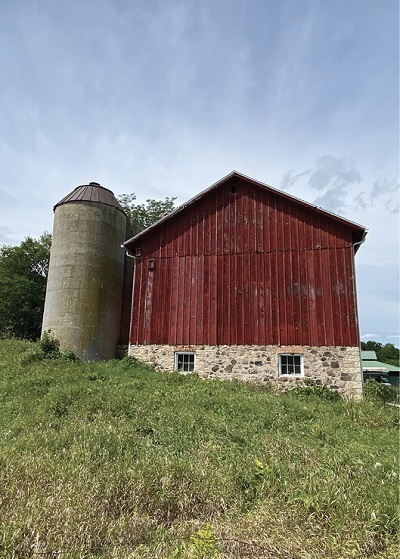
The adventure of the Field Station itself began when Gertrude Sherman contacted the UW–Madison Alumni Association in 1966 about donating her familty farmstead to the university. The association didn’t quite know what to do with it. Bob Rennebohm, Director of the UW Foundation, saw an opportunity nonetheless. He called Murray Deutsch, the dean of the recently founded UW–Waukesha Center. and asked him to contact her. Dean Deutsch fondly recollects calling Ms. Sherman to arrange a visit. “She was a lovely lady, quite old then, in her 90s.”
Deutsch, now 95 and living in San Francisco, was thrilled at the prospect of acquiring the land, as were educators at the Waukesha Center and the educators associated with UW–Milwaukee’s Field Station. “We wanted to use the land for the sciences,” he told me. “It was my idea that the biology department look after it. But we used it in all the sciences. When we secured the donation, there were a number of faculty who were interested in getting involved in the planning for its use.”
If developing a field station for the natural sciences was an early objective of UW–Waukesha, it soon became clear that many educators viewed the Field Station as a space for all disciplines to find both inspiration and instructive opportunities. By the late 1970s, Jim Cheney and his wife Fran, along with art professor Mary Ellen Young, and literature professor Tom Moylan, had worked with Marlin to lay the groundwork for the Wilderness University: An Exploration of Right Relationship to Nature and Land. The program brought poets like Gary Snyder and Wendell Berry, photographers like Robert Glenn Ketchum, and others to the Field Station to lead clinics, workshops, and lectures which were—like the work of the humanists and artists themselves—earth-centered.
In a March 2022 interview I asked Wisconsin Poet Laureate and former UW–Waukesha English professor Peggy Rozga if she thought the Field Station had a golden age. After pausing a moment, she replied, “Maybe there were several golden age periods. When there was Wilderness University, when there were supportive faculty across multiple disciplines, and when there was a source of funding for programs that certainly were important. There was no way that I could become a faculty member here and be unaware of the wonderful addition to the campus that the Field Station is.”
Throughout the past, year both the Friends and Marlin himself have spoken of changes at the Field Station that have given them pause, sadness, or a sense of longing for something lost. When Marlin retired from teaching…when he stepped down as the director of the Field Station…when the Friends were no longer able to participate in the prairie burn…when the long day’s labor on the prairie moved from restoration to maintenance…when UW–Waukesha merged with UW–Milwaukee…
Joannie Warsinki shared one such moment at the fiftieth anniversary of the Field Station, after the prairie was named the Marlin Johnson Prairie. Marlin shared his final wishes with the crowd, to have his resting place be there in the prairie. Shortly after, a man came up. He said, “Well, we’re not going to do that,” and laughed. “We’re certainly not going to do that,” he said.
The man, Joannie believes, was an administrator at the university. “I just thought ‘wow,’” she said. “What a difference in the kinds of people we’re talking about here. […] Marlin is very aware that this is where we came from and this is where we’re going. He wanted to have a natural burial here, but the people who […] now have domain over this field station don’t want that.”
Even though a natural burial on the prairie is in fact prohibited by law, the incident reveals a great deal about the tension that many of the Friends of the Field Station feel at the transition of leadership. Nonetheless, many of them seem to have a cautious optimism that with the changes afoot, new friendships can be fostered—that the community of practice will continue to draw them back season over season, year over year—through births and deaths, and changes—to a place that they consider a spiritual home. In a conversation that included her husband Meredith, Mary Cullen succinctly summarized the challenges that any organization has in replacing a charismatic leader and teacher like Marlin, who has meant so much to the community in this small corner of Wisconsin:
He just makes my heart kind of grow and feel. He’s just one of those very special, special people. I don’t know if you talked to Meredith about [Marlin’s] being a steward of these lands. I can’t imagine anyone else. This is his life’s focus…you don’t know where Marlin ends and the prairie begins.
As Marlin made the prairie, the prairie made him, and those who love and learned from the one, very much love and learned from the other. The stories that these people hold among themselves, while deeply rooted in the past, are like the goldenrod they pinch and gather in bags to store for next year’s planting. Gathered bit by bit, these seemingly ephemeral seeds of personal history can play a vital role in shaping the future of the Field Station for seasons to come.


